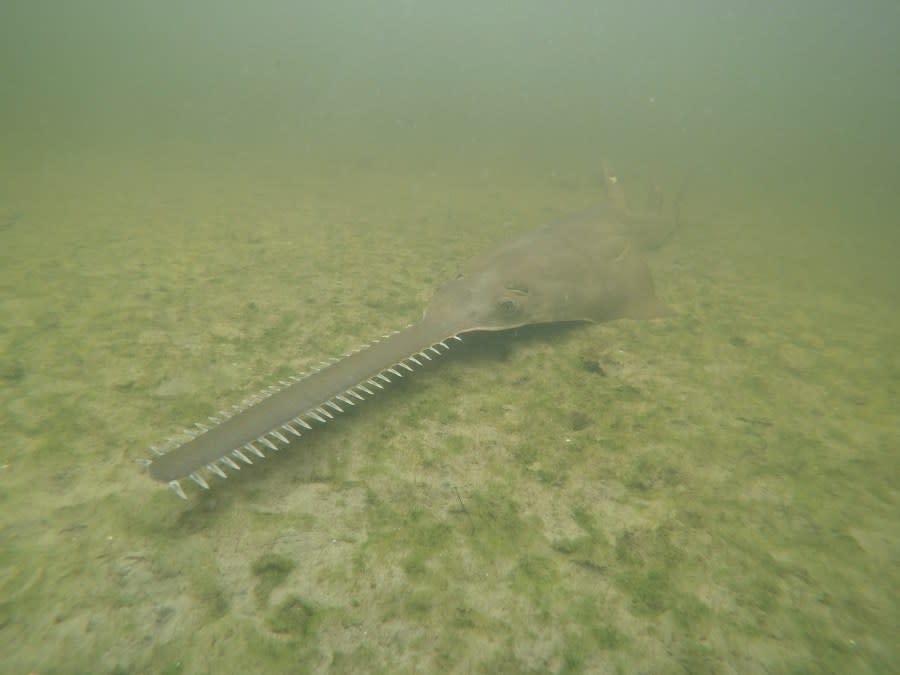Fish are spinning, thrashing themselves to death in Florida — and nobody knows why

(NewsNation) — It’s usually easy for scientists to figure out what kills fish and other marine life around Florida and the Gulf Coast: development, pollution, human intrusion or a combination of all three. But there is a new mystery that’s killing fish, especially one of the most endangered species.
Fish and wildlife officials have recorded hundreds of incidents of fish literally spinning themselves to death. And for now, they have no idea why.
The Florida Fish and Wildlife Commission has found no signs of a communicable disease: No red tide toxins, and no issues with oxygen, salt levels, pH, or water temperatures, either. The National Oceanic and Atmospheric Administration announced what it calls an “emergency response” focused on the Florida Keys starting this week. A NOAA news release called the effort unprecedented.
Toxic toads that can kill pets in minutes are breeding in Florida
Since late January, state wildlife officials have been documenting what they call an “unusual mortality event” that has affected about 109 sawfish and killed at least 28 of them. There have been reports of abnormal behavior, such as the fish seen spinning or whirling in the water. Other species of fish also appear to have been affected.
Because sawfish are negatively buoyant, they’re unlikely to float after death, causing some to worry the total mortality rate is higher, Adam Brame, NOAA Fisheries’ sawfish recovery coordinator told The Associated Press.
The fish are related to rays, skates and sharks. They’re named after their massive chainsaw-like bills, and have been on the federal endangered list since 2003.

Sawfish can live for decades and grow quite large, some as long as 16 feet. They were once found all along the Gulf of Mexico and southern Atlantic coasts in the U.S., but now are mainly in southwestern Florida and the Keys island chain as their habitats shrink. A related species is found off Australia.
It’s also not clear if the deaths and odd behaviors are related to a lengthy summer heat wave in Florida waters experts say was driven by climate change. The superheated waters caused other marine damage, such a coral bleaching and deaths of other ocean species.
While the cause of their erratic behavior is currently unclear, researchers have discovered that a captured fish stopped spinning when they were put in “clean” water. That has led officials to try something never attempted before — rescuing as many sawfish as possible.
“People do these rescues for sea turtles, dolphins and manatees all the time. But it’s never been done for a 14-foot sawfish before,” Smalltooth Sawfish Recovery Team leader Tonya Wiley told The Tampa Bay Times. “We’re blazing a trail here. This is definitely the most devastating singular event for sawfish.”
Scientists will hunt for fish in trouble in the Florida Keys, catch them and move them to a recovery facility. How they’ll do that, however, is still a work in progress.
“We have quarantine facilities ready to accommodate rescued sawfish where they would be under observation by qualified personnel under specific care and release guidelines,” said Kathryn Flowers, Mote Postdoctoral Research Fellow and lead scientist on the sawfish issue. “Attempts to solve this mystery call for robust collaboration.”
Brame said the effort depends on tips and sightings from the public of dead or distressed sawfish so rescuers know where to look for them. NOAA has a tipline at 844-4-Sawfish and FWC has an email, sawfish@fwc.com.
The Associated Press contributed to this report.
For the latest news, weather, sports, and streaming video, head to Queen City News.

